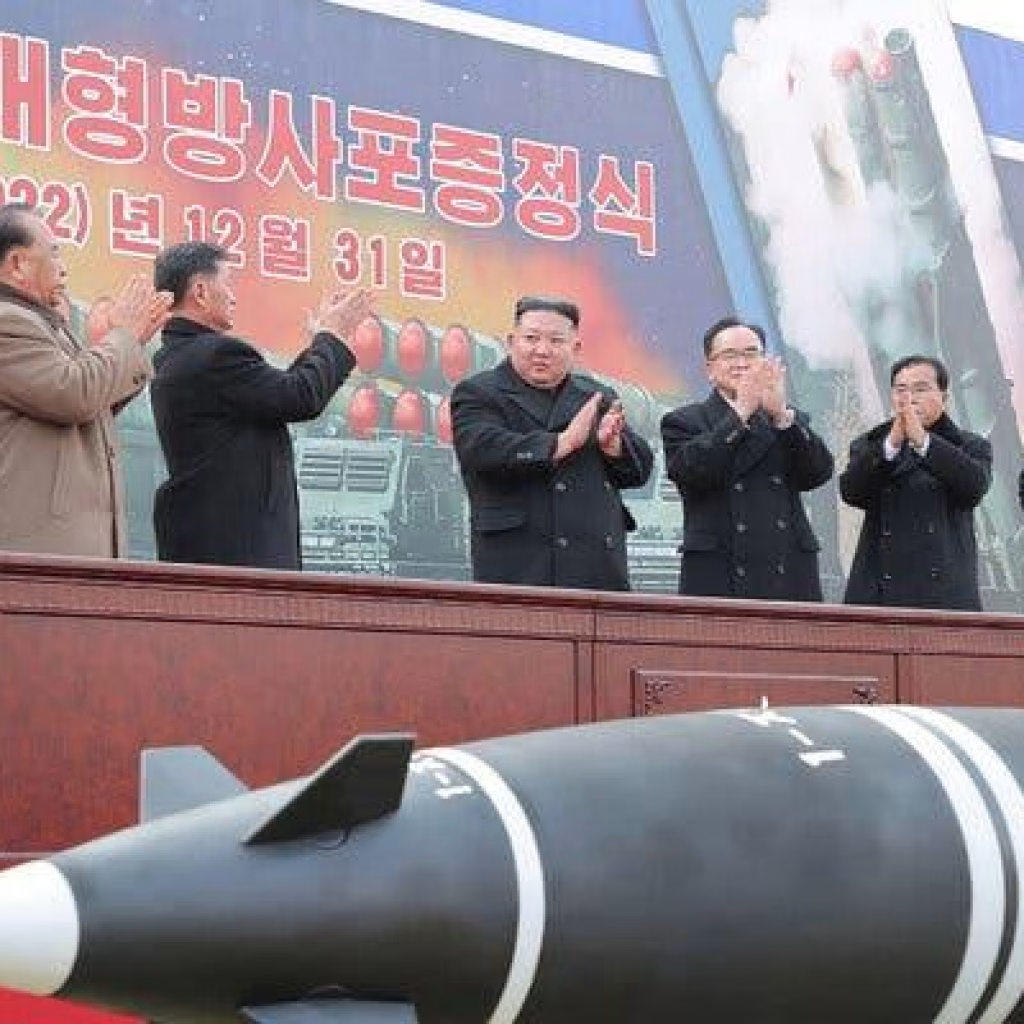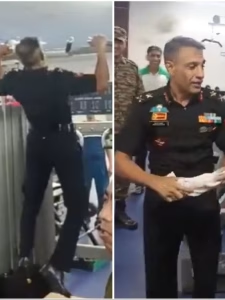Seoul: As scores more of Pyongyang’s trash-filled balloons touched down in the South on Thursday, official media in North Korea reported that the country had successfully tested its multiple-warhead missile capacity.
As Pyongyang ramps up its weapons tests and bombards the South with balloons full of rubbish, claiming it is in revenge for similar missives sent northward by activists in the South, relations between the two Koreas are at an all-time low.
Due to the balloons’ temporary closure of Seoul’s main airport, Incheon, on Wednesday, South Korea has entirely suspended a military pact aimed at easing tension and has resumed live-fire drills and propaganda loudspeaker broadcasts close to the border.
According to the state-run Korean Central News Agency (KCNA), North Korea declared on Thursday that it had “successfully conducted the separation and guidance control test of individual mobile warheads”.
It stated that during the test, which was conducted the day before, the “separated mobile warheads were guided correctly to the three coordinate targets”.
KCNA went on, “The test is aimed at securing the MIRV capability,” which refers to the technology of multiple independently targetable reentry vehicles, or the capacity to launch multiple warheads on a single ballistic missile.
The military of South Korea had earlier stated that although the North’s test on Wednesday seemed to be of a hypersonic missile, the launch terminated in an explosion in midair.
The official stated that the missile looked to be emitting more smoke than usual, which might indicate problems with combustion. It also suggested that the missile might have been propelled by solid propellants.
The test, as reported by KCNA, “was carried out by use of the first-stage engine of an intermediate-range solid-fuel ballistic missile within a 170-200 kilometre (105 to 124-mile) radius.”
“The effectiveness of a decoy separated from the missile was also verified by anti-air radar,” it said.
According to Hong Min, a senior research researcher at the Korea Institute for National Unification, obtaining multiple-warhead missile technology is the ultimate aim for countries looking to acquire ICBM-level missiles with nuclear warheads.
According to him, the North is “testing such technology step by step over the long haul,” as reported by AFP.
“They appear to be making technological advancements in the early development stages of multiple-warhead missiles.”
Blitz of balloons
In a tit-for-tat propaganda blitz, North Korea has been launching hundreds of trash-carrying balloons southward over the past three days.
About 70 balloons had touched down by Thursday morning, mostly in the Seoul region and northern Gyeonggi province, according to Seoul’s military, and their contents had not been determined to be dangerous.
It stated, “There is a risk if the balloons descend rapidly because the payload is about 10 kilograms (22 pounds),” and added that the military was prepared to act.
Depending on the tactical and strategic context, the response to the most recent balloons “will be flexible.” It said, “This is dependent on North Korea’s conduct.
On Wednesday, the South Korean Marine Corps began conducting live-fire drills on islands close to the western border between the two Koreas. These are the first drills conducted since the 2018 military agreement with the North to reduce tensions was completely halted this month.
Together, the US and South Korea conducted combined air exercises on Wednesday that involved around thirty aircraft, including the F-22 Raptor, Washington’s cutting-edge stealth fighter.
On Tuesday, President Yoon Suk Yeol paid a visit to a US aircraft carrier that had come to South Korea for this week’s joint trilateral military exercises intended to confront North Korean threats.
The USS Theodore Roosevelt, a nuclear-powered aircraft carrier based in Washington, the guided-missile destroyer JS Atago in Tokyo, and the KF-16 fighter jets in Seoul are among the several assets used in the drills, which take place from Thursday to Saturday.






